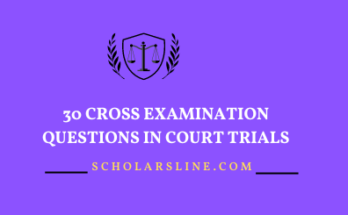How to Raise the Defence of Contributory Negligence in Law
Contributory negligence is a legal concept that allows defendants in civil cases to argue that the plaintiff’s own actions or negligence contributed to their injuries or damages. This defense can significantly impact the outcome of a case, as it shifts some or all of the responsibility for the harm suffered onto the plaintiff. To effectively raise the defense of contributory negligence, defendants must understand its principles and requirements, gather relevant evidence, and present a compelling argument in court.
Principles of Contributory Negligence
Contributory negligence is based on the principle that individuals have a duty to exercise reasonable care for their own safety and well-being. When someone fails to fulfill this duty and their negligence contributes to an incident or injury, their legal claim may be weakened or barred altogether. In essence, contributory negligence recognizes that more than one party can be at fault for an accident or harm.
Requirements for Raising Contributory Negligence
To successfully raise the defense of contributory negligence, defendants must meet certain requirements and criteria:
1. Evidence of Plaintiff’s Negligence: Defendants must present evidence showing that the plaintiff acted negligently or failed to exercise reasonable care under the circumstances. This evidence can include witness testimony, expert opinions, documentary evidence, or physical evidence such as photographs or video recordings.
2. Causation: Defendants must establish a causal link between the plaintiff’s negligence and the harm they suffered. In other words, they must demonstrate that the plaintiff’s actions directly contributed to the incident or injury in question.
3. Proportionality of Fault: Contributory negligence is often evaluated in terms of proportionality. Defendants must argue that the plaintiff’s negligence was a significant factor in causing the harm and that their own fault should be taken into account when determining liability and damages.
READ ALSO: How to Create an Enforceable Contract and the challenges
Steps to Raise Contributory Negligence Defense
1. Gather Evidence: Collect all relevant evidence that supports the claim of the plaintiff’s negligence. This may include witness statements, accident reports, medical records, photographs, and any other documentation that helps establish the plaintiff’s fault.
2. Consult Legal Counsel: Seek advice from experienced legal counsel who can assess the strength of the contributory negligence defense in your case and provide guidance on strategy and tactics.
3. Prepare Arguments: Develop persuasive arguments that clearly demonstrate how the plaintiff’s actions or omissions contributed to the incident or injury. Anticipate counterarguments and prepare responses to strengthen your case.
4. Present Evidence in Court: During the trial, present your evidence and arguments effectively to the judge or jury. Use clear and concise language to explain the concept of contributory negligence and why it applies in your case.
5. Cross-Examine Witnesses: Challenge the plaintiff’s version of events and question their credibility during cross-examination. Look for inconsistencies or contradictions in their testimony that undermine their claim and support your defense.
6. Demonstrate Comparative Fault: Emphasize the proportionality of fault by highlighting any actions or decisions made by the plaintiff that contributed to the incident. Show how their negligence compares to your own and argue that they should bear some responsibility for the harm suffered.
7. Seek Legal Precedents: Refer to relevant legal precedents or case law that support the applicability of contributory negligence in similar situations. This can help strengthen your argument and persuade the court to consider the defense favorably.
Conclusion
Raising the defense of contributory negligence in law requires careful preparation, strategic thinking, and persuasive advocacy. By gathering compelling evidence, presenting strong arguments, and demonstrating the plaintiff’s proportionate fault, defendants can effectively defend themselves against liability for damages. However, navigating the complexities of contributory negligence requires the expertise of skilled legal professionals who can guide defendants through the process and maximize their chances of success in court.
Thanks for going through this post; How to Raise the Defence of Contributory Negligence in Law




